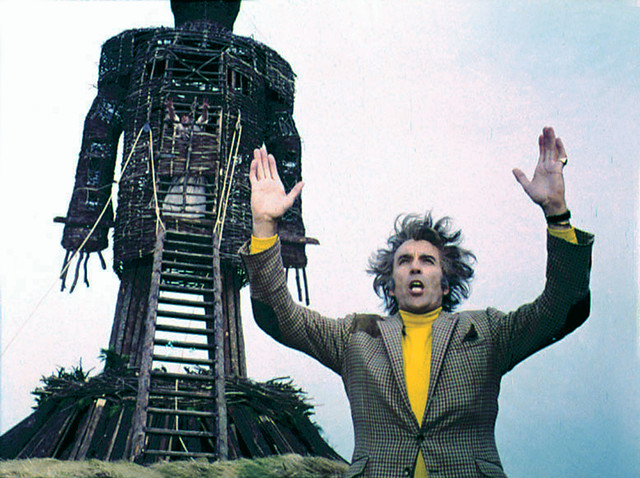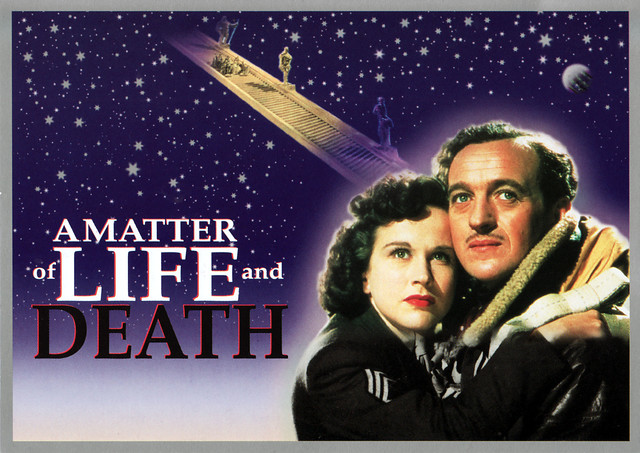by Julian Jackson
Tucked away in an obscure corner of South London is a researcher’s treasure: The Ronald Grant Archive and The Cinema Museum. For film lovers like myself, going there is like falling into a crazy Aladdin’s cave stuffed full of film memorabilia and equipment.

Ronald Grant started the archive in 1973 and continues to be passionate about anything to do with film. Over the previous years he had amassed a large collection of posters, film stills, movie magazines, and equipment. He had a stall in the famous Portobello Market in Notting Hill, London, where he sold this memorabilia. Someone working on a magazine series called The Story of Pop inquired if he had any pictures of pop stars.
Oh yes, he did. Lots of them in various movies, some brilliant, some duds. So he supplied a selection of stills and many were used. He received a check in the mail. This triggered the idea that there was money to be made from his collection.
Martin Humphries, Ronald’s right-hand man, tells me all about the archive and museum. Perhaps he is playing the role of the trusty side-kick in this Ealing Comedy of a story: it definitely sounds like one of those stories where a group of misfits, driven by their love of cinema, win out against the odds. He says, “When I met Ronald, in 1979, I was astonished – I’d never met anyone who had so much material devoted to one subject.”
He is telling me this in the main exhibition area of The Cinema Museum, surrounded by posters, signed movie star pictures, projectors, picture house signage, lighting equipment and oodles of other memorabilia.

For the first few years, the collection moved around between seedy and unsuitable locations. While this was happening, Ronald, through his connections in the trade, was visiting movie theaters that were about to be demolished and rescuing the equipment and visual media. Even sometimes the carpets! It was the best of times, it was the worst of times. The Cinema Museum was created in 1984 and achieved charitable status in 1986. Martin continues, “We are a small, independent, volunteer-run museum. We’ve been going thirty-three years, which is a minor miracle in itself.”
The next step was to find a better venue than the decaying place they had been in, and they moved in 1989 to The Old Fire Station. This was still not suited to public access, but they could run the Picture Library, and also sort, catalogue, store and sometimes loan parts of the collection to other museums.
Eventually, they managed to find the present building which was a former poorhouse, which has a connection to Charlie Chaplin (who was born in the neighborhood): his mother – a former singer who had mental health issues – lived here in the early 1900s. Overcoming his poverty-stricken childhood, Chaplin went to Hollywood in 1914, and in a few years, becomes the most famous man in the world. He didn’t forget his mother and was able to bring her to Los Angeles where she lived her last few years in comfort.

The Master’s House, the administration block of the former Lambeth Workhouse, where lived and worked the Master in charge of the Workhouse and the 1,400 destitute souls who occupied the bare and minimal dormitories elsewhere on the site, divided as they were into men and women of good character and bad character.
The museum occupies the entire building.
The museum and picture library specialize in British Cinema: both the experience of going to the cinema and the trove of content that it created. Art Deco in style, much of the movie house paraphernalia would have been lost if it wasn’t for Ronald’s diligence in preserving it.
They give tours to the public (by appointment), have a huge events program, and the archive holds 7000 books, trade and fan magazines going back to the 1890s, a collection of over a million film stills, and posters. Martin laughs when I ask him how many: “Thousands of them. I have absolutely no idea how many we have.” They also have collections relating to theater and music.
With the digital age, it is possible to scan items from magazines and send them digitally, so this has increased the availability of material. For example, in trade publications, they would often feature upcoming posters for film releases, so these can be accessed now.
Ronald was pretty eclectic in his acquisitions: he didn’t just concentrate on “cinema greats”. “Ronald collected anything to do with film, it didn’t matter if it was Grade Z.” Martin points to a poster for Johnny Weissmuller in Jungle Moon Men, “I haven’t seen that but I reckon it would be pretty Grade Z.”

Obviously, there is material available with American actors, directors, and stars when they were involved in British movies. Lots of U.S. film material from the releases in the UK. They have some European and global content, but the archive is mainly from a British angle.
To visit the museum, you have to make an appointment. It is actually only a few minutes walk from the Elephant and Castle Underground station. The archive is available online, but most of it has not been scanned yet, being so vast. If you need a film subject it is probably best to inquire via email or phone – you will find the staff exceptionally knowledgeable about movies and friendly too.
The one potential Death Star on the horizon is that they are still not secure in their building. It is owned now by Britain’s National Health Service, and for many years the archive has been trying to buy it, to give the collection a permanent home. But negotiations are at an impasse currently. Let’s hope that this magnificent collection will win out in the final reel and continue on to a bright future.
All images copyright The Ronald Grant Archive.
http://ronaldgrantarchive.com/

